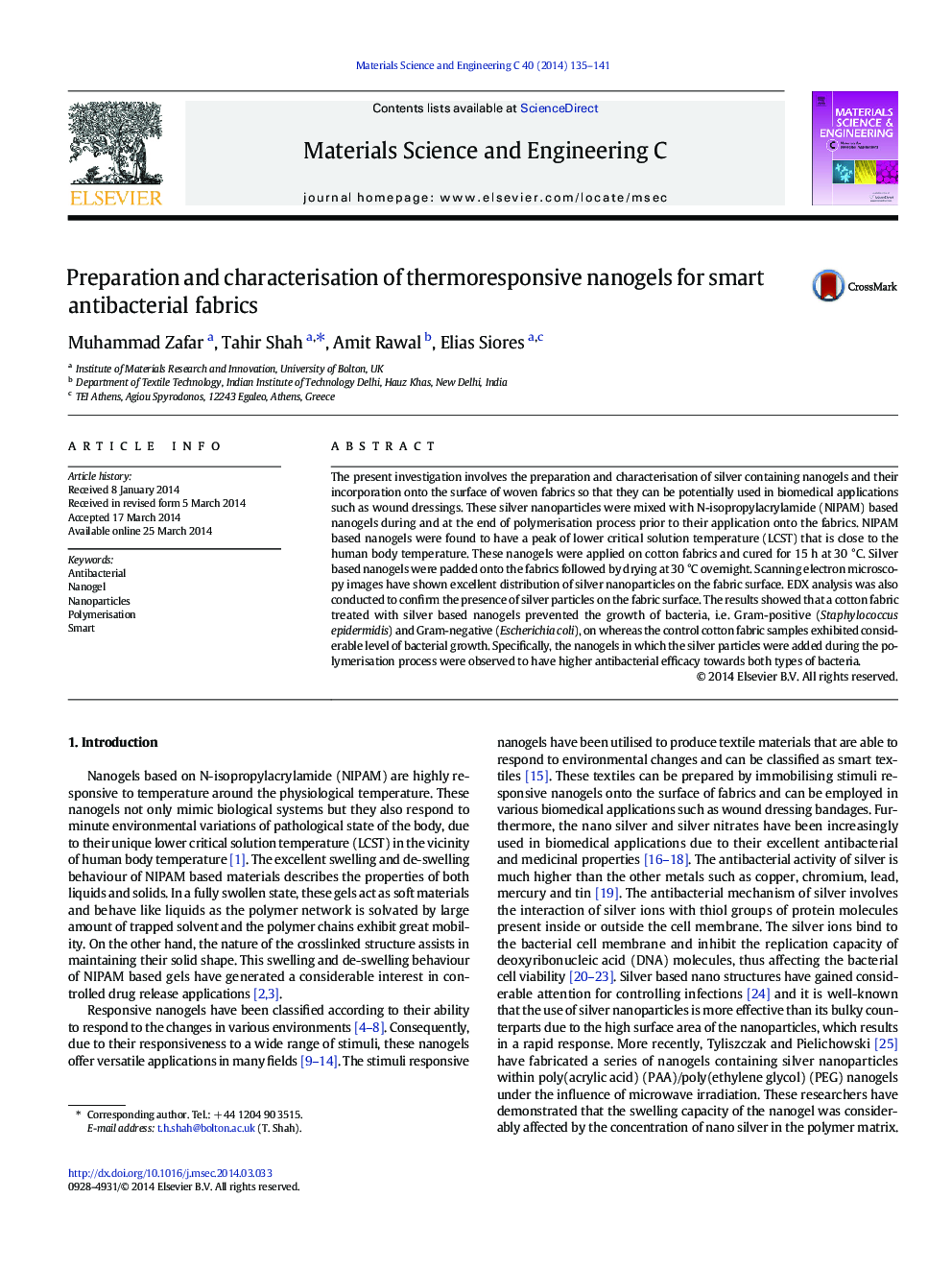| Article ID | Journal | Published Year | Pages | File Type |
|---|---|---|---|---|
| 1428325 | Materials Science and Engineering: C | 2014 | 7 Pages |
•Silver containing NIPAM based nanogels were prepared and characterised.•Cotton fabric treated with silver based nanogels prevented the growth of bacteria.•Silver particles added during polymerisation revealed higher antibacterial efficacy.
The present investigation involves the preparation and characterisation of silver containing nanogels and their incorporation onto the surface of woven fabrics so that they can be potentially used in biomedical applications such as wound dressings. These silver nanoparticles were mixed with N-isopropylacrylamide (NIPAM) based nanogels during and at the end of polymerisation process prior to their application onto the fabrics. NIPAM based nanogels were found to have a peak of lower critical solution temperature (LCST) that is close to the human body temperature. These nanogels were applied on cotton fabrics and cured for 15 h at 30 °C. Silver based nanogels were padded onto the fabrics followed by drying at 30 °C overnight. Scanning electron microscopy images have shown excellent distribution of silver nanoparticles on the fabric surface. EDX analysis was also conducted to confirm the presence of silver particles on the fabric surface. The results showed that a cotton fabric treated with silver based nanogels prevented the growth of bacteria, i.e. Gram-positive (Staphylococcus epidermidis) and Gram-negative (Escherichia coli), on whereas the control cotton fabric samples exhibited considerable level of bacterial growth. Specifically, the nanogels in which the silver particles were added during the polymerisation process were observed to have higher antibacterial efficacy towards both types of bacteria.
